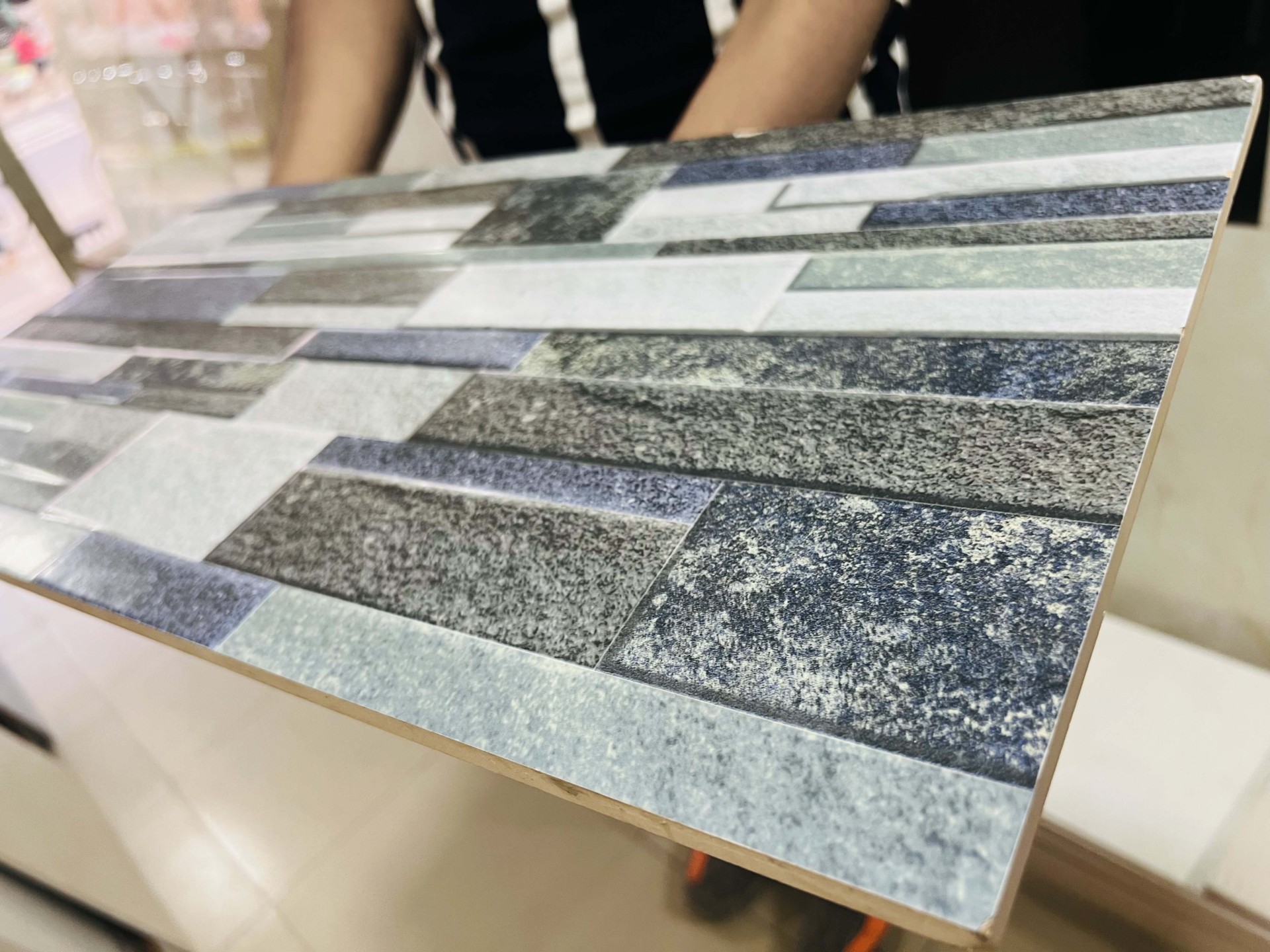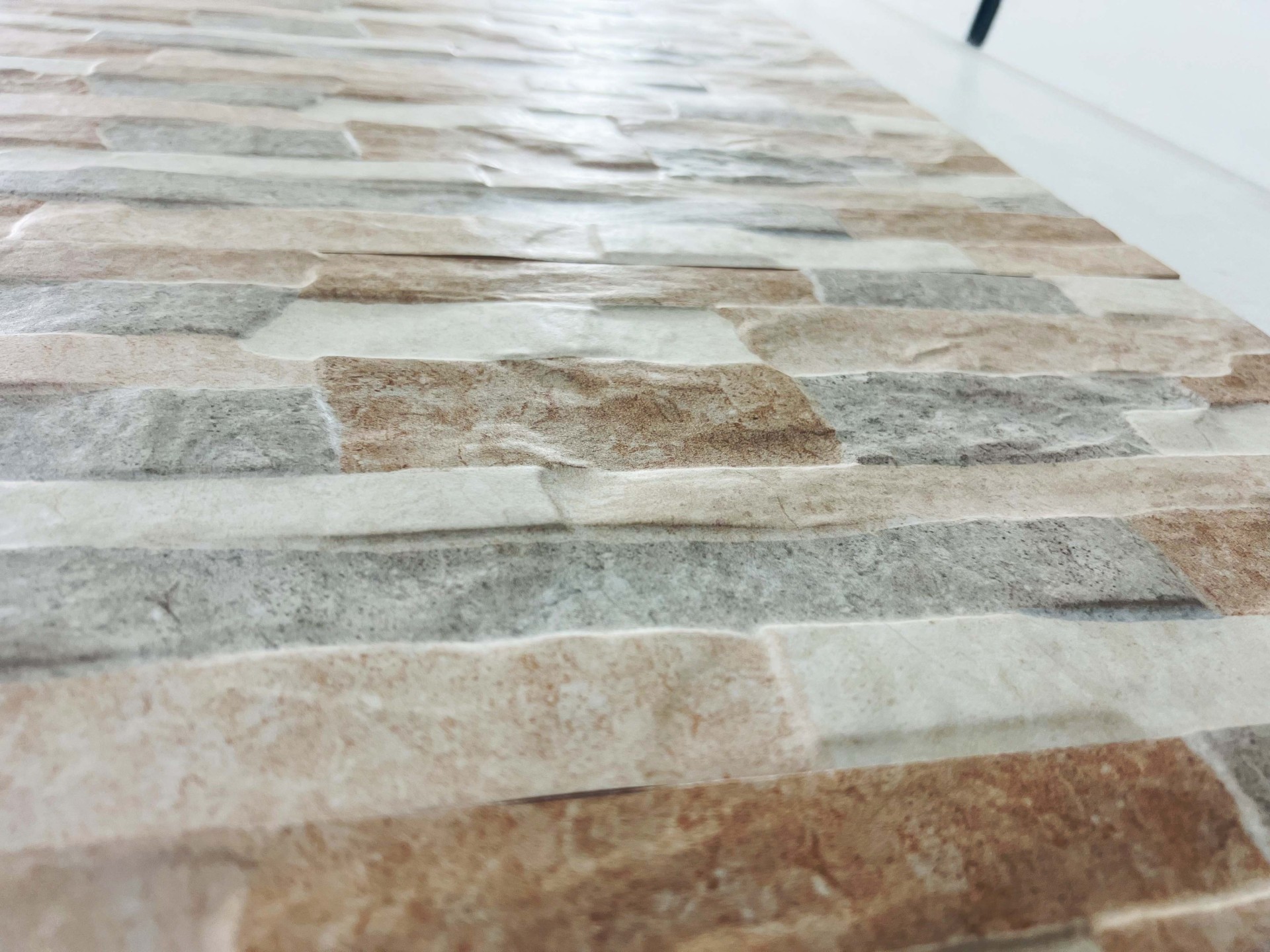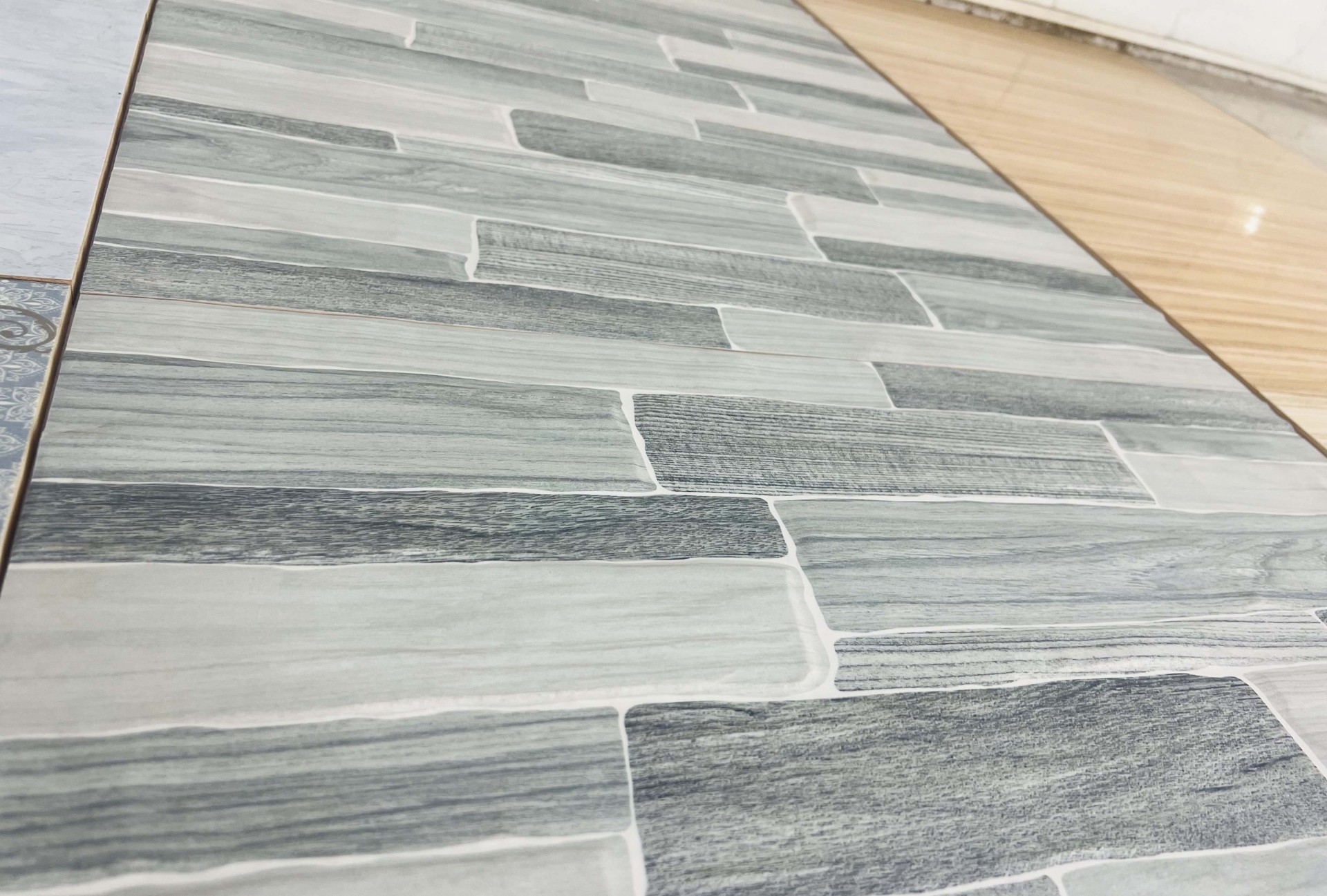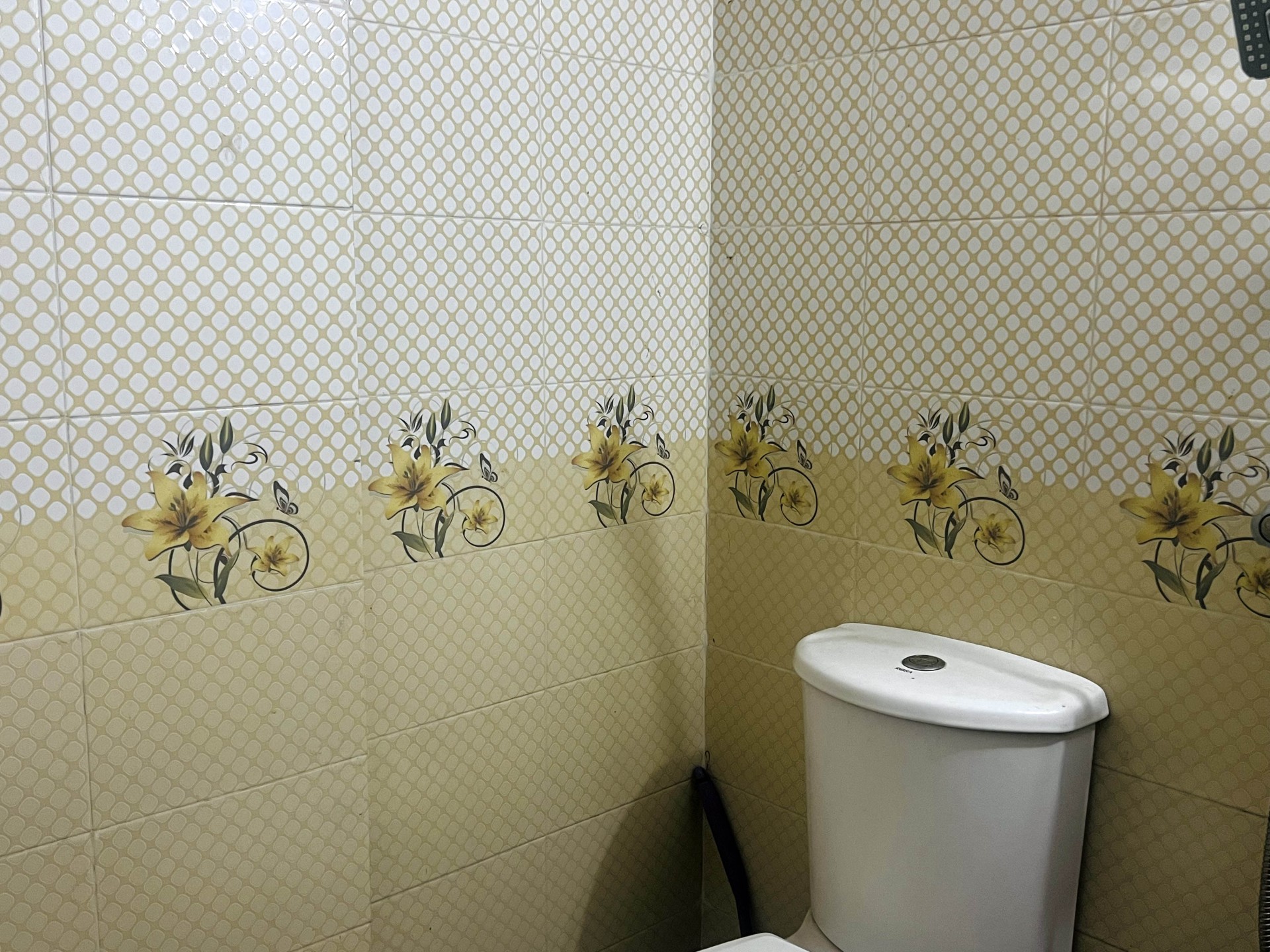When I was renovating my home, I spent a lot of time researching different types of flooring. From hardwood to carpet, there are pros and cons to every choice. But one type of flooring that I found particularly interesting was floor tiles. There are many options in style, material, and size. However, one question kept nagging me throughout my research: how thick are floor tiles?
Tile thickness usually varies according to their intended use. The thickness of a tile can range from 1/8 inch to over 1 inch. Most porcelain tiles have a thickness ranging from 6mm to 10mm. This thickness range is suitable for most applications. Stone tiles are usually 3/8 inches, cement tiles are 1/8 to ½ inches, porcelain tiles are ¼ to ¾ inches, ceramic tiles are 5/8 inches, and mosaic tiles are 1/8 to ¾ inches thick.
Types Of Floor Tiles and Their Thickness
After I started my research, I was sure that floor tiles must be sturdy and appropriate for the weight they must support. Otherwise, my floor will deteriorate and require frequent repairs.
For example, bathroom floor tiles must be solid, porous, and water-resistant. If not, they may become damaged and pose a hazard. Additionally, retiling a bathroom takes a long time and can be exhausting.
So, I must use the right kind of tile on the corresponding flooring. Here, I have prepared a list of several popular floor tiles, along with their respective thicknesses:
Stone Tiles
The most common thickness for interior stone tiles is 3/8 inches. These floor tiles are the heaviest and thickest available. Their thickness determines how much pressure or harsh strikes they can withstand.
Smaller stone tiles are typically 3/8′′ thick and measure 12′′x12′′ in size. However, each tile that is 3/8′′ thick will weigh roughly 5.5 lbs per square foot. The standard thickness for 16′′x16′′ and 18′′x18′′ is usually 1/2′′. Additionally, a tile with 1/2″ thickness will weigh about 6 lbs per square foot.
Stone tiles have an incredibly long lifespan but are also very expensive. They offer a range of options and are the costliest type of tile.
Cement Tiles
Cement tiles typically have a 1/8 to 1/2 inch thickness, although this may vary. They are heavy, very strong, and permeable. Their thickness determines how much pressure or how strong of a strike they can withstand.
However, the thickness of 8′′ tiles is around 5/8 of an inch (16mm). Also, the thickness of 10′′ and 12′′ tiles can be up to 3/4′′.
Cement tiles are highly insulating and keep your home cool. They also last a very long time. However, they are somewhat porous and susceptible to stains. Extreme cold may also cause them to crack.
Porcelain Tiles
The thickness of porcelain tiles ranges from 1/4 to 3/4 inches. Most porcelain floor tiles have the thickness range between 6 to 10mm, and are perfect for most flooring applications. They are denser, heavier, and more porous than other types of tiles. Additionally, they are more resistant to moisture.
Most porcelain tiles have a minimum thickness of 6 millimeters. However, some porcelain tiles are quite thin, measuring only 3 to 6 millimeters. As a result, the tiles may be only 0.12 inches thick.
Porcelain is durable and requires little maintenance despite being expensive. However, it should not be pushed down too firmly to prevent it from falling out like bed slats.
Ceramic Tiles
Ceramic tiles typically range from 3/8 inch to 1/2 inch thick. Compared to other types of tiles, they tend to be softer, less dense, and less porous. Due to their thickness, they cannot withstand heavy blows or intense pressure.
Ceramic tiles come in various sizes and shapes with several types of finishes. However, the usual rectangular shape includes 16 x 16 inches, 12 x 12 inches, 6 x 6 inches, or 4 x 4 inches. Ceramic tiles are also very resistant to water and quite durable. This prevents water from seeping under the floor tiles. The only drawback is that they can be difficult to install.
Mosaic Tile
The term “mosaic tile” refers to a specific type of tile made of porcelain or ceramic that uses tiny tiles pre-attached to a flexible mesh backing. Larger mosaics tiles are made of 1×1 to 2×2 which are more commonly used for flooring. But, single tiles as tiny as 1/2×1/2 inches are also available. The average thickness of mosaic tiles is 1/8 to 1/2 inches.
The mosaic panels often have a measurement of 1×1 ft. or larger. Using mosaic sheets provides a quick way to replicate the look of a custom tile installation, which was previously achieved by skilled installers placing small tiles one by one in a wet mortar bed.
Due to a large number of grout lines, these mosaic sheets are usually unsuitable for full-floors. On the other hand, these are more commonly utilized for backsplashes. However, these panels can also add accent areas or decorative borders to a floor covered with larger porcelain or ceramic tiles and in bathrooms.
Slate Tile Thickness
Slate tile thickness varies depending on the size and type of tile. This is a metamorphic rock composed of quartz, calcite, mica, and chlorite that forms naturally when sediment fuses together under the heat of the earth’s crust. However, this hardstone is ideal for flooring in both residential and commercial settings.
The thickness of 12-inch square slate tiles from China and India can range from 3/8 to 7/16 inches. Indian slate tiles of the same size may have a thickness ranging from 7/16 to 1/2 inch. However, Chinese slate tiles may have an average thickness of 1/2 to 9/16 inches. To ensure a level floor, adjustments may be made to account for variations in tile thickness when laying the product with medium-bed mortar.
Now, let’s take a look at the common floor tile and their thickness:
Why There Is Different Thickness Of Floor Tiles
Floor tiles are a crucial element in modern home design. They offer durability, easy maintenance, and aesthetic appeal. However, not all tiles are equal – their thickness is critical to their performance and longevity. Here are the factors influencing floor tile thickness and its importance:
- Material
The material used to make floor tiles significantly impacts their thickness. Ceramic tiles are usually thinner than porcelain tiles, which need to be thicker to withstand heavy traffic due to their density and durability. Natural stone tiles like granite and marble have varying thicknesses because of their natural composition.
- Intended Use
The room’s purpose for installing tiles determines their thickness. High-traffic areas like entryways and kitchens need thicker tiles to endure constant use. In comparison, low-traffic areas like bedrooms and bathrooms can use thinner tiles.
- Subfloor Condition
The subfloor’s state also affects tile thickness. Thicker tiles can compensate for an uneven subfloor and prevent breakage from underlying imperfections. Thinner tiles can be used without issue if the subfloor is in good condition.
- Design
Tile design can also impact thickness. Intricate designs, textures, and patterns require more material, making the tiles thicker. Raised designs or textures may also need to be thicker to prevent breakage or chipping during installation and use.
Are Thicker Tiles Better
The thickness of a tile depends on the manufacturer, style, and material of the tile. Regarding your question about whether thicker tiles are better, it depends on the intended use of the tile. A tile’s strength depends on its thickness. The harder and more pressure-resistant the tile is, the thicker it is, and the greater its degree of hardness.
Hardness ratings typically come in 5 levels:
Class I – This kind is solely appropriate for walls and has no foot traffic.
Classes II – Light usage and may be utilized in home or commercial environments with minor wall abrasion, such as bathrooms.
Class III: Traffic that is light to moderate. For locations with frequent foot traffic, such as residences and business buildings, these are ideal. They are excellent alternatives for counters and walls as well.
Class IV: Heavy to moderate traffic. Those who reside in high-traffic regions should attend this program. This works well on the flooring of your house, medium-sized business buildings, or light institutional buildings.
Class V – These tiles may be used in light and heavy commercial projects and all residential applications. In places like clinics or schools with a lot of foot traffic, these robust materials can withstand it without displaying any wear and tear.
Tile Thickness According To Use
Tile thickness varies according to their intended use. Most porcelain tiles have a thickness ranging from 6mm to 10mm. This thickness range is suitable for most applications. Wall tiles typically have a thickness between 6 and 10mm, with mosaics and decorative wall pieces available in the same range for easier mixing.
While tile thickness may not be noticeable in the finished project, it’s helpful to know when planning a renovation. This is particularly important when determining the final height of your floor, as you’ll need to account for any underlayment, leveling compound, and adhesive bed.
Different types of tiles for different purposes are likely to have varying thicknesses. For example:
Bathroom Border
For the borders of your bathroom, you can opt for tiles with a thickness of 1/4 inch. This thickness is perfect for creating a clean and subtle transition between different tiles or materials. Thin tiles are also easier to cut and install in tight spaces, making them an excellent choice for borders and accents in your bathroom.
General Flooring, Bedrooms, and Hallways
You can choose tiles thickness ranging from 1/4 to 1/2 inch for general flooring, bedrooms, and hallways. This thickness is perfect for areas with low to moderate foot traffic. Thicker tiles provide more durability and stability, which makes them ideal for these areas.
Living Rooms, Kitchens, and Basements
I will recommend using 1/2 to 3/4 inches thick tiles for high-traffic areas like living rooms, kitchens, and basements. Thicker tiles can withstand daily wear and tear, heavy foot traffic, and the weight of furniture and appliances. They also provide more insulation and noise reduction than thinner tiles.
Large Rooms, Commercial Areas, Pavers
For larger rooms, commercial areas, and outdoor pavers, choosing tiles with a 5/8 to 1+ inches thickness is best. These thicker tiles provide more stability, support, and durability. This makes them ideal for high-traffic areas that require heavy-duty flooring. Thick tiles are also more resistant to damage from weather, water, and other external factors.
Choosing floor tiles with an appropriate thickness for your needs is important. Thinner tiles may be less durable than thicker ones, so high-traffic areas like the living room, kitchen, and main entranceway should have thick tiles. You may opt for thinner, more decorative tiles in less active areas, such as guest rooms or half bathrooms.
Importance Of Right Tile Thickness
Choosing the correct tile thickness is crucial for both durability and functionality. Thicker tiles have higher hardness ratings and can withstand more wear and tear.
For example, when installing an electrical box on a wall, the wall plate must be level with the finished wall tile to ensure proper placement. Similarly, when installing floor tiles, it’s important to ensure that doors can swing freely and that the tiles are level with those in adjacent areas.
Additionally, if you have different flooring materials in adjacent rooms, such as vinyl tile in the dining room and floor tile in the kitchen, using a thicker underlayment under the vinyl tile can help create a seamless transition.
FAQs
How thick should wall tiles be?
Wall tiles are typically thinner than floor tiles due to their lower durability requirements. The standard thickness for wall tiles ranges from 6mm to 10mm.
When choosing a tile trim, it’s important to consider both the tile’s thickness and the adhesive bed’s depth. For example, if the tile is 8mm thick, you should select a trim that is 10mm wide.
Which tile size is best for flooring?
If you are looking for floor and wall tiles, you have many choices of sizes. Some of the most common ones are 300×600 mm, 600×600 mm, 610×610 mm, 800×800 mm, 250x350mm, 300x450mm, and 300x600mm. Experts say that large tiles can make a room look bigger. That’s a good tip to remember when selecting tiles for your space.
Are Bigger tiles better?
Larger tiles provide a smooth and aesthetically pleasing surface since they have fewer grout lines. Large-format floor tiles can make almost any space seem bigger and more open.
Conclusion
There are many types of tiles you can use for your flooring. However, their thickness may vary. Knowing the ideal tile thickness range for your floor is very important. Whichever tile you choose, be sure to know its standard thickness range so you can be sure that it will last longer.
After reading this article, I hope you now know everything about how thick are floor tiles. I will suggest you choose a thicker tile as they are strong, durable, and long-lasting.
Also read – How To Remove Urine Smell From Bathroom Tile?








